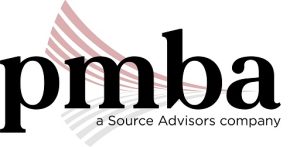Learn What Activities May Qualify for Significant Tax Savings.
Calculating the Research and Experimentation Tax Credit (RTC) under IRC §41 allows taxpayers engaged in qualified Research and Development (R&D) activities to claim a credit against their income taxes. Eligible costs include employee wages, costs of supplies that are used and consumed or destroyed in R&D efforts as well as contract research expenses.
Although these incentives can result in significant tax savings and free up capital for growth, many contract manufacturers remain unaware that they qualify, as this was not always the case. Currently, there are federal and multi-state R&D Tax credits for manufacturing – including contract manufacturing.
On December 18, 2015, President Obama signed The Protecting Americans from Tax Hikes Act of 2015 (the PATH act) which made the R&D tax credit permanent and allowed the credit to be used to offset Alternative Minimum Tax (AMT) for qualified small businesses and to offset payroll taxes for qualified startups. A qualified small business is a corporation (including an S corporation) or partnership with gross receipts of less than $5 million for the tax year, and no gross receipts for any tax year before the 5-tax-year period ending with the tax year.
R&D Tax Credits and Manufacturing – What Qualifies?
The manufacturing industry, including those involved in manufacturing process improvements, is entitled to the credit if, among other things, the products being manufactured involve abstract analysis and multiple iterations of prototype designs prior to creating a final prototype that can be mass produced and pass quality assurance/quality control (QA/QC). For example, an Aerospace & Defense company may need to prepare multiple iterations of a gyroscope prototype within an application lab and a fabrication lab before even attempting to understand how to bring their next generation best-in-class gyroscope roll-out to the commercialization phase that could require iterations of property, plant and equipment and facets of iterations of process engineering.
Even after an experimental batch trial is run, additional changes to the conceptual framework may have to occur to achieve proof of concept. This innovative process of developing a new method, idea, or product and the improvements that substantially enhance existing products or deliver a more efficient process can lead to lucrative savings when claiming the RTC.
For an activity to qualify for the credit, there is a four-part test that must be met. The information to be discovered must be technological in nature, there must be a process of experimentation to reduce technical uncertainty and the research must relate to a new or improved product or process.
Each of the taxpayer’s claimed projects must pass the four-part test, that is, there must be uncertainty requiring a process of experimentation around each product, process, technique, formula, or invention which is to be held for sale, lease, license, or used in a trade or business of the taxpayer. Uncertainty exists if the information available to the taxpayer does not establish the capability or method for developing or improving the business component, or the appropriate design of the business component.
Manufacturing Offers Numerous Opportunities Within the Four-Part Test Parameters
Most manufacturing companies are developing new products or enhancing existing ones daily. As it relates to the function, performance, reliability and/or quality of the product, the time spent from the point of conceptualizing an idea to achieving proof of concept and being able to take a product from experimental batch trials to production batch trials would mostly qualify.
Scaling up operations is not as easy as creating one prototype in a fabrication lab. The time spent on accomplishing this while creating a product that will also meet specific industry standards does qualify if there is still ongoing experimentation. Enhancements can be so broad as to also include processes or procedures that increase throughput which can involve designing innovative tooling and equipment. For example, being able to create a manufacturing process improvement through iterations of process engineering to significantly increase production throughput of a product will qualify for the R&D Tax Credit.
Weed Out Non-Qualified Activities
Certain activities do not qualify, and time spent on them should be bifurcated and removed from the calculation. This includes time relating to style, taste, cosmetic, or seasonal design factors. Adaptation of an existing business component to a customer’s requirements or needs and supplicating of existing business components would also not qualify. This includes any reproductions of products already available without significant enhancements. In addition, efficiency surveys, management functions, market research testing or development and routine data collections also would not qualify.
Expert Assistance Helps Navigate Complexities of R&D Tax Credits for Manufacturing
The information in this post is basic in the hopes that some contract manufacturers who have not realized they may qualify for manufacturing R&D tax credits will recognize it’s worth their while to explore further. To make that effort as fruitful as possible it is important to seek expert assistance. The details required to establish and defend a contract manufacturing R&D claim are laborious and the process is arduous and highly nuanced.
If you have any questions, please feel free to reach out to the PMBA National R&D Tax Credit Practice at R&Dincentives@pmba.com. You can find more information about R&D tax credits here. And you may enjoy reading about how a fourth-generation contract manufacturing firm began using R&D tax credits.
